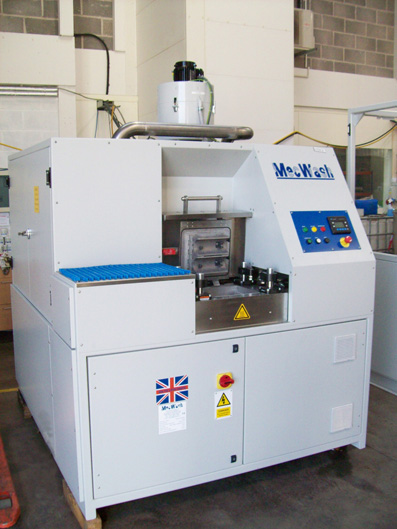Filtermist's Managing Director, James Stansfield, explains how the centrifugal technology used in Filtermist units is used by aqueous parts washing manufacturers to remove potentially damaging steam and mist from the workplace.
“The growing global recognition of the need to protect workers’ health, illustrated by the 2008 introduction of UK health and safety guideline HSG258 on controlling airborne contaminants, means oil mist extraction units are now a common sight in manufacturing plants around the world. But oil mist, dust and fumes aren’t the only contaminants whose presence isn’t welcomed in the workplace – steam and mist produced as a direct result of heating water and detergent to very high temperatures can be equally damaging to health, equipment and electrical systems.
One example of an application where centrifugal extraction units have been proving their worth for a number of years is aqueous parts washing. The nature of component cleaning applications requires the highest standards of both cleanliness and dryness to ensure the end product does not suffer from internal contamination (ingression) of any description – even the smallest particles of residue and water can significantly impair the performance of the machinery in which the components are used. Whilst aqueous parts washers offer excellent standards of component drying, the temperatures reached during the wash cycle can result in mist and steam which can lead to condensation, rust and become a health hazard if not properly addressed.
Filtermist units are located on the top of the wash machine; ensuring mist is collected at source before it has the opportunity to permeate throughout the factory. Spinning at a rate of 2850rpm (at 50hz) and 3420rpm (at 60hz), the centrifugal drum collects tiny particles of water and forces them together to form larger droplets which are then collected and removed, or returned to the wash machine depending on the nature of the application. Particles of cleaning agents which could otherwise enter the air are also removed at source, ensuring workers are not exposed to any microscopic particles which could potentially be harmful to their health.
The material used to manufacture extraction units used in parts washing is vital – Filtermist offers a stainless steel range specifically designed for use in applications where excessive moisture and corrosive elements are present or where legislation dictates the use of stainless steel, such as food production.”
Filtermist works with a number of market leading component cleaning specialists worldwide including Turbex, Guyson and MecWash. MecWash Managing Director, John Pattison, explains why the company has worked with Filtermist for more than 15 years.
“Filtermist uses proven technology housed in robust casings that stand the test of time. Some of our customers operate three shifts meaning production is continuous – all elements of our wash systems must be capable of handling 24/7 operation. Where required, we include Filtermist as standard for all clients where a build-up of steam could be an issue. The units are compact, making fitting simple, and their size, location and use of standard consumable parts means they are easy to maintain – making life easier for our clients and ensuring they’re happy with every aspect of the MecWash cleaning system.”
James Stansfield concludes, “As well as being used by a huge number of OEM’s worldwide, our units can also be fitted retrospectively – making them ideal for installations where the application may have changed and for incidents where the need for an effective steam and mist extraction system has become apparent over time.”
